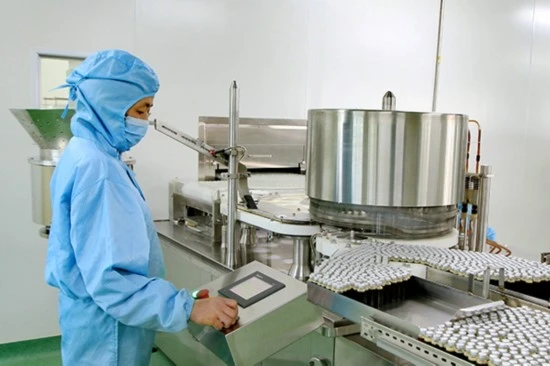- Afrikaans
- Albanian
- Amharic
- Arabic
- Armenian
- Azerbaijani
- Basque
- Belarusian
- Bengali
- Bosnian
- Bulgarian
- Catalan
- Cebuano
- Corsican
- Croatian
- Czech
- Danish
- Dutch
- English
- Esperanto
- Estonian
- Finnish
- French
- Frisian
- Galician
- Georgian
- German
- Greek
- Gujarati
- Haitian Creole
- hausa
- hawaiian
- Hebrew
- Hindi
- Miao
- Hungarian
- Icelandic
- igbo
- Indonesian
- irish
- Italian
- Japanese
- Javanese
- Kannada
- kazakh
- Khmer
- Rwandese
- Korean
- Kurdish
- Kyrgyz
- Lao
- Latin
- Latvian
- Lithuanian
- Luxembourgish
- Macedonian
- Malgashi
- Malay
- Malayalam
- Maltese
- Maori
- Marathi
- Mongolian
- Myanmar
- Nepali
- Norwegian
- Norwegian
- Occitan
- Pashto
- Persian
- Polish
- Portuguese
- Punjabi
- Romanian
- Russian
- Samoan
- Scottish Gaelic
- Serbian
- Sesotho
- Shona
- Sindhi
- Sinhala
- Slovak
- Slovenian
- Somali
- Spanish
- Sundanese
- Swahili
- Swedish
- Tagalog
- Tajik
- Tamil
- Tatar
- Telugu
- Thai
- Turkish
- Turkmen
- Ukrainian
- Urdu
- Uighur
- Uzbek
- Vietnamese
- Welsh
- Bantu
- Yiddish
- Yoruba
- Zulu
Th12 . 03, 2024 16:28 Back to list
Comparative Analysis of Veterinary Disinfectants for Effective Animal Hygiene Practices
Comparison of Veterinary Disinfectants A Comprehensive Overview
In the veterinary field, maintaining a clean and disinfected environment is essential for the health and welfare of animals. The presence of pathogens, bacteria, and viruses can significantly compromise animal health, leading to illness and even outbreaks of disease. Therefore, the selection of an effective veterinary disinfectant is paramount. This article compares various types of veterinary disinfectants, examining their efficacy, application, and suitability for different veterinary settings.
Types of Veterinary Disinfectants
Veterinary disinfectants come in several forms, each with its unique active ingredients and modes of action. The most common categories include quaternary ammonium compounds (quats), oxidizing agents, phenolic compounds, and iodophors.
1. Quaternary Ammonium Compounds (Quats) Quats are widely used for their effectiveness against a variety of bacteria, fungi, and some viruses. They are known for their surface compatibility and low toxicity to animals when used as directed. Commonly found in veterinary practices, quats are ideal for disinfecting surfaces and equipment. However, they may not be effective against certain spores and some viruses.
2. Oxidizing Agents Disinfectants like hydrogen peroxide and peracetic acid fall under this category. They are particularly effective against a broad spectrum of microorganisms, including bacteria, viruses, and some fungi. Oxidizing agents work by releasing free radicals that destroy cellular components of pathogens. Their use is beneficial in environments where a high level of disinfection is required, such as during outbreaks of contagious diseases. However, they can be corrosive and may require more thorough rinsing post-application.
3. Phenolic Compounds These compounds are known for their strong antibacterial properties and are effective against a wide range of pathogens. Phenolic disinfectants are often used in kennels, stables, and animal facilities due to their residual activity, meaning they continue to work even after the initial application. However, they can be toxic to cats and other sensitive animals, necessitating careful consideration when selecting this type of disinfectant.
veterinary disinfectant comparison

4. Iodophors Iodophors, which release iodine when diluted, are excellent for skin disinfection and are effective against bacteria, viruses, and fungi. They are often used in surgical settings and for disinfecting instruments. Though effective, these compounds can stain surfaces and may cause irritation to sensitive skin.
Factors to Consider When Choosing a Disinfectant
When selecting a veterinary disinfectant, several factors must be taken into account
- Spectrum of Activity The disinfectant should be effective against the specific pathogens of concern in the veterinary setting. - Safety The chosen disinfectant must be safe for use around animals, particularly in environments with sensitive species. - Contact Time Different disinfectants require varying contact times to be effective; understanding this can impact overall efficiency. - Compatibility with Surfaces Certain disinfectants can damage surfaces or equipment; compatibility is essential to avoid costly replacements. - Ease of Use The product should be easy to apply and integrate into daily cleaning protocols, as ensuring compliance is crucial for maintaining hygiene standards.
Conclusion
In summary, the selection of an appropriate veterinary disinfectant is critical for ensuring the health and safety of animals in a veterinary practice or facility. Each category of disinfectant has its advantages and limitations. By understanding the unique properties of quaternary ammonium compounds, oxidizing agents, phenolic compounds, and iodophors, veterinary professionals can make informed decisions that align with their specific needs and circumstances. A comprehensive approach to disinfection, combined with regular cleaning and monitoring, will help effectively control infections and promote a safe environment for animals and staff alike.
-
Guide to Oxytetracycline Injection
NewsMar.27,2025
-
Guide to Colistin Sulphate
NewsMar.27,2025
-
Gentamicin Sulfate: Uses, Price, And Key Information
NewsMar.27,2025
-
Enrofloxacin Injection: Uses, Price, And Supplier Information
NewsMar.27,2025
-
Dexamethasone Sodium Phosphate Injection: Uses, Price, And Key Information
NewsMar.27,2025
-
Albendazole Tablet: Uses, Dosage, Cost, And Key Information
NewsMar.27,2025













